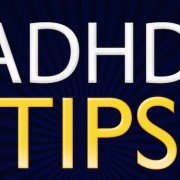ADHD Symptoms in Girls
What ADHD symptoms should parents look for in girls?
There are three main type of ADHD symtpoms, impaired response inhibition, off task behaviors, and poor persistence or sustained attention.
Impaired response inhibition includes:
-difficulty delaying gratification
-difficulty waiting ones turn
-interrupting others
-calling out, impassivity
-difficulty stopping a task
-being easily distracted
-difficulty stopping an ineffective strategy and changing to a more effective strategy
Off task behavior includes:
-hyperactivity
-being excessively fidgety
-frequently leaving ones seat
-appearing always “on the go”, constantly moving.
Poor persistence includes:
-difficulty sustaining attention with boring or tedious tasks
-difficulty sustaining motivation
-poor concentration
-difficulty returning to a task when distracted
-appearing not to listen
Other related problems include:
-poor time management
-forgetfulness
-frequently losing personal belongings
-disorganization
-poor regulation of emotions
ADHD Coaching is available online, by phone , and in-person.

